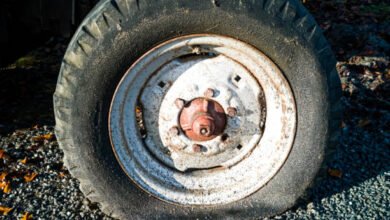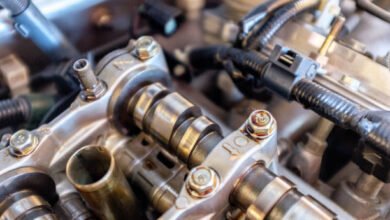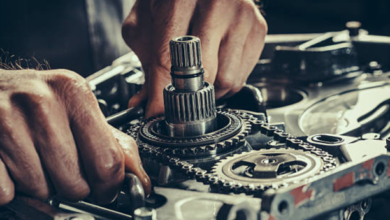Common Symptoms of Gear Slipping

Gear Slipping
Car Slipping Gears is a problem which occurs when the transmission doesn’t appropriately have the needed gear engaged or fail to stay in a certain gear. This might sometimes be analogous to a short pause in the acceleration or a more sudden rise in engine speed which is not accompanied by an increase in car speed. In a manual transmission, the slip of gears would be noticed as hard shifting, popping out of or staying in a particular gear, which is usually accompanied by a feeling as if the gear lever lever is not securely engaged.
This problem can stem from a number of factors, like low fluid level, faulty solenoids, bad synchronizers, or more severe transmission-related issues. Whether the reason is premature wear and tear, improper installation, or negligence, it can trigger bad performance of the car, low energy efficiency, and eventually, even dangerous situations. So, a timely inspection and repair by a qualified automobile mechanic are needed as solution to this issue.
Symptoms of Gear Slipping in Automatic Transmission
The symptoms of a car gear slipping can vary depending on whether you have an automatic or manual transmission. Here we will discuss the symptoms of car slipping gears in Automatic transmission:
1. Delayed or Erratic Shifting:
Automatic transmission of modern cars is not always perfect and means that the driver may experience delays or problems while shifting the gears during driving. This problem usually involves a perceptible delay in the moment of switching to a higher gear at the time of acceleration, which is expressed in a timid acceleration or hesitation. Besides, erratic up shifting may curtail the transmission from switching the gears smoothly or in an orderly manner that may lead to jerky moves and the car experiencing a sensation of hunting for the right gear. They can really disrupt driving experience and they may also mean underlying faults in the transmission fluid, solenoids or other components of the transmission. Early diagnosing and qualified repair of the transmission by the mechanic are the necessary steps in order to prevent further damage and ensure proper operation of the car.
2. RPM Fluctuations:
Engine RPM fluctuation is either a sudden or an erratic RPM variation that suddenly or irregularly occur when driving. During normal engine operation, the Governor RPM typically hovers within a specified range which is usually affected by vehicle speed, gear selection, and throttle input. Yet, this can be in the form of inconsistent revs (i.e. speeding up and slowing down of the engine) without the corresponding changes in the driving conditions. Such changes may be observed in all of these mentioned conditions and can be proof of some faults like a bad throttle body, a vacuum leak, malfunctioning fuel delivery system and sensor problems. As soon as RPM fluctuations, unmasked by diagnosis and repair by a certified mechanic, happen, the engine performance and fuel efficiency are rebounded.
3. Clutch Slippage:
Slippage of the clutch happens when the friction is not present between clutch disc and the flywheel or pressure plate in a manual transmission car leading to reduced efficiency of the powertrain. This lets the power of the engine not be transferred to the wheels as efficiently as expected and consequently results in symptoms such as the engine sounding like it is running at a higher rev without the speed of the car also increasing especially at the time moments of acceleration. Clutch slippage has a multitude of causes that include a deteriorated clutch disk, pressure plate or flywheel; inaccurately adjusted clutch pedal; or oil and debris on the clutch components. With time, the clutch would wear out due to the slippage. This may lead to the clutch system becoming damaged, and in the end the clutch may just need replacement that will take up the wallet. Consequently, early diagnosis and repair of the clutch slippage by a competent mechanic becomes a paramount necessity in order to have the safe car on the road.
4. Burning Smell:
A burning smell in your car can signal a number of issues, but in connection with the transmission problem, it usually exaggerates the problem that causes friction and heating in the transmission or clutch system. This particular smell might be felt both in the vehicle’s interior as well as its outside and might emulate the sense of a burned or overheated thing. When involving transmission problems, such as slipping gears or defective clutch, the burning smell may be a resultant of components rubbing and overheating instead of the proper operation due to inadequate lubrication, worn out parts or incorrect adjustment. A burning smell in a vehicle associated with the transmission might be indicative of further damage, requiring costly repairs if missed out. Accordingly, timely notification of a burning odor to a qualified mechanic is required to diagnose and fix the problem.
5. Transmission Noise:
This type of noise relates to any abnormal sound coming from the transmission gearing or pulleys inside of a car. These sounds can be of different nature (whining, scratching, screeching, clunking, humming, or buzzing) and they may only take place while accelerating, decelerating, switching gears or idling. The common sources of transmission noise are unequal or worn-out gears, bearings, synchronizers, oil pans, and the fasteners, transmission fluid levels insufficient or contaminated and impaired, and loose or damaged transmission mounts. Safely repaired transmission system can be obtained, thus avoiding expensive repairs. This implies that every strange transmission noises should be diagnosed and look for a remedy by an expert mechanic as soon as possible in order for the vehicle to work in an economically and safe way.





Hey people!!!!!
Good mood and good luck to everyone!!!!!